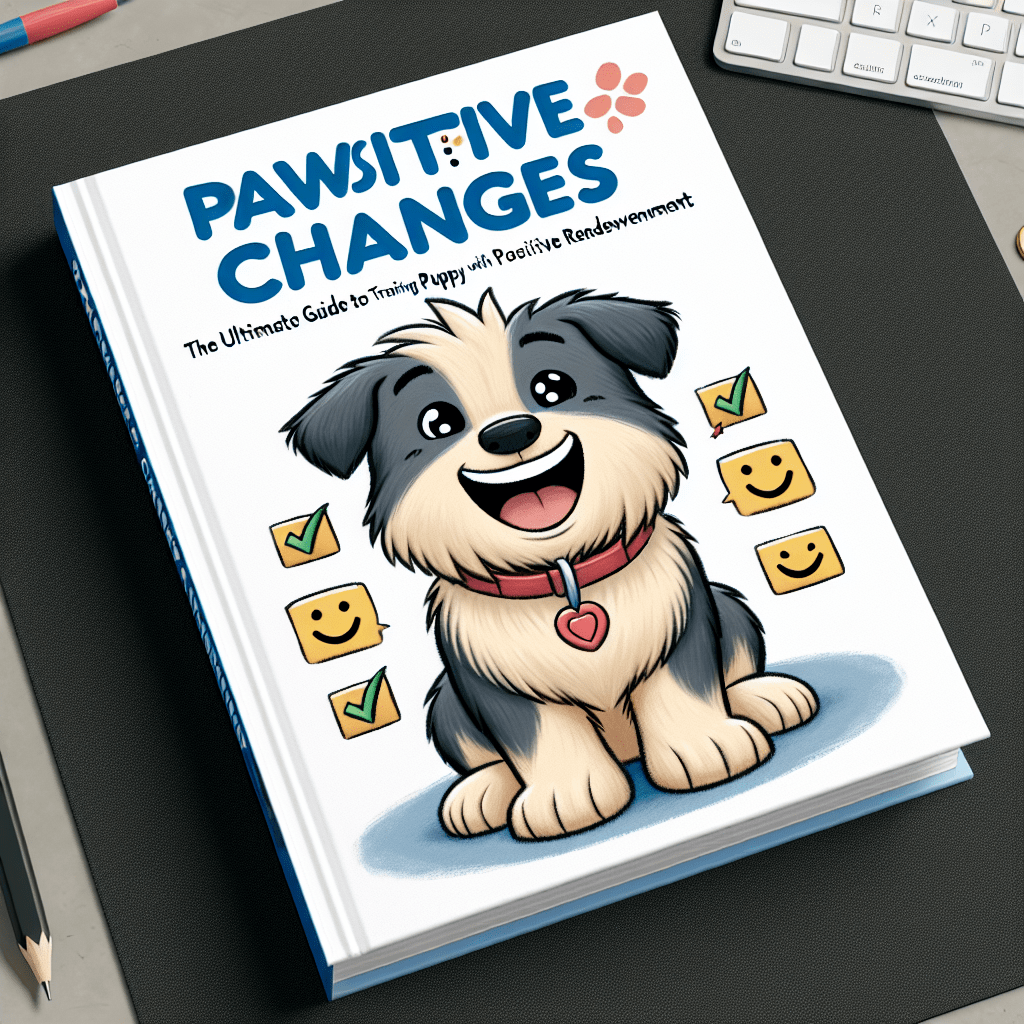Pawsitive Changes: The Ultimate Guide to Training Your Puppy with Positive Reinforcement
Welcoming a new puppy into your home is like opening a treasure chest filled with joy, laughter, and a hint of chaos. As a seasoned dog trainer and a lifelong dog lover, I understand the rollercoaster of emotions that come with the package. With the right approach, you can turn that chaos into a harmonious relationship through positive reinforcement. In this comprehensive guide, we’ll explore effective techniques, share real-world solutions, and provide tips that will make your training journey fun and rewarding.
Chapter 1: Why Positive Reinforcement Works
Positive reinforcement isn’t just a trendy phrase; it’s a scientifically backed method that capitalizes on the simple principle of rewarding good behavior. This technique nurtures your puppy’s desire to learn and please you.
- Builds Trust: Puppies thrive on love and attention. By incorporating rewards, you foster a bond based on trust and respect.
- Encourages Engagement: When learning is fun, your puppy is more likely to engage and participate. Toys and treats add an exciting element to training.
- Long-lasting Results: Unlike punitive training methods, positive reinforcement teaches your puppy to actively seek rewards, resulting in more durable behavior change.
Real-World Application:
Start with simple commands like “sit” or “stay.” Whenever your pup follows through, reward them immediately. A small treat, a gentle pat, or a cheer can work wonders. Over time, they will associate these commands with positive outcomes.
Chapter 2: Getting Started
You may wonder, "Where do I begin?" The answer lies in setting realistic goals and creating a structured yet flexible training plan.
- Define Clear Objectives: Decide on what behaviors you want to reinforce. Popular foundational commands include:
- Sit
- Lie down
- Recall (come here)
- Create a Consistent Schedule: Training is most effective when it’s routine. Aim for short sessions of about 5-10 minutes, several times a day.
- Stay Patient and Positive: Mistakes will happen, and it’s essential to stay calm and encouraging. Every puppy trains at their own pace.
Establishing a Routine:
Begin training during moments when your puppy is naturally alert, such as after a nap or meal. Use positive reinforcement consistently, ensuring your puppy understands what actions result in rewards.
Chapter 3: Tools and Techniques
Here’s a handy toolkit for effective puppy training:
- High-Value Treats: These can include small bits of cheese, chicken, or homemade dog biscuits. Experiment to find out what excites your pup most.
- Clicker: A clicker can help mark desired behavior precisely when it occurs, creating a clear link between action and reward.
- Praise and Play: Never underestimate the power of verbal praise or a quick play session as rewards. Daily play sessions create a happy pup.
Training Techniques:
To effectively execute training commands:
- Use hand signals along with verbal commands.
- Break down commands into smaller steps.
- Always reward immediately to build a strong association.
Chapter 4: Addressing Challenges
Challenges are a part of every training journey. It’s crucial to respond with understanding rather than frustration. Here are some common issues and strategies to tackle them:
- Jumping Up on People: Redirect the behavior by teaching your puppy to sit when they greet someone. Reinforce sitting with treats and praise.
- Barking: Determine the cause (e.g., boredom, anxiety) and address it. Incorporate games and activities to keep your pup occupied.
- Potty Training Accidents: Schedule regular potty breaks, reward your puppy when they go outside, and supervise them indoors.
Tips For Overcoming Obstacles:
- Keep a close eye on your puppy’s behavior to catch them before they engage in unwanted actions.
- Use a consistent cue word or phrase when they display the desired behavior, reinforcing that behavior over time.
Chapter 5: Ensuring Ongoing Success
Once your puppy learns the basics, the journey should continue. Training is an ongoing process that requires persistence and creativity.
- Advanced Commands: Once your pup is comfortable with basic commands, introduce more complex tricks like “roll over” or “play dead.”
- Socialization: Expose your puppy to different environments, people, and other animals to build confidence and reduce fearfulness.
- Positive Problem Solving: Keep a training notebook to track progress and challenges. This approach helps you remain aware of what works best for your puppy.
Continuous Learning:
Engage with your puppy by regularly updating your commands and exercises, ensuring they remain challenged and motivated.
FAQs
What age should training begin?
Start training as soon as your puppy comes home, ideally around 8 weeks old.
Can I use positive reinforcement for all behaviors?
Yes, positive reinforcement can be applied to almost any behavior you wish to encourage.
What if my puppy doesn’t respond to treats?
Try varying rewards with toys, affection, or playtime to find what resonates with your puppy.
How long does training take?
Training duration varies, but consistent short sessions help build lasting habits.
Is it typical for puppies to regress in their training?
Yes, inconsistencies can occur. Stay patient and remind your puppy of their training.
Unlock the Secrets to a Well-Behaved Dog! 🐾 Tired of your pup’s bad habits? Discover how to transform your unruly dog into a loving companion with our FREE Dog Training Mini Course! Learn essential commands, potty training tips, and effective techniques to eliminate unwanted behaviors in just days. Don’t miss out—sign up now and start your journey to a happier, obedient dog! (bit.ly/3RJak0a)
Disclaimer: As an Amazon Associate, I earn from qualifying purchases. I may earn a commission from qualifying purchases as an affiliate. Please note that I only recommend products I believe will provide value to my readers.
With the right approach, training your puppy can be a joyful experience filled with bonding moments, trust, and learning. Embrace the journey, and with time and patience, every little hurdle will turn into a triumphant leap forward. Happy training!

